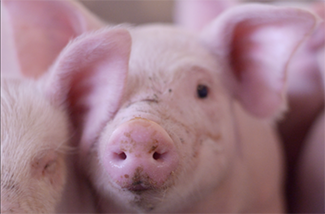Arizona Pork | More Than Just Tasty Bacon
Cool Facts About Arizona Pork and Pork Overall
As a commodity, pork has been raised in Arizona for a long time. Over the decades, pork producers have become more and more sophisticated in how they raise hogs for quality, nutrition and care for the animal.
The most recent available statistics through the United States Department of Agriculture’s National Agricultural Statistics Service (USDA-NASS) reports that pork brought in cash receipts totaling $41 million (2019) in Arizona. That’s not counting the economic value brought by those employed in the industry, capital investments, and more.
The Arizona Pork Council supports pork producers and helps Arizona families understand and enjoy the versatility and nutritional value of pork.
The Nutritional Versatility of Pork

Throughout my life, Pork has been part of my diet because of its health benefits. The variety of options range from decadent and flavorful to lean and nutrient-rich cuts that are affordable, easy to make, and enjoyable to families.
What I’ve recently learned from the National Pork Board, for decades, America’s pig farmers have worked closely with their team of pig health professionals reviewing and researching what pigs eat and how they are raised and bred to develop leaner, higher quality pork cuts that people continue to prefer. Because of this dedication to quality and continuous improvement, it comes as no surprise that pork has consistently been the number one protein enjoyed worldwide.
The National Pork Board helps highlight the nutritional value of pork.
Compare Pork
- Today’s pork compares favorably to other protein sources regarding fat, calories, and cholesterol. In addition to providing protein, pork also provides many other important vitamins and minerals, including some that are under-consumed according to current recommendations.
- While providing greater amounts of vitamins and minerals, many cuts of pork are as lean or leaner than chicken.
Protein in Pork
- Through dedication to providing protein that people are looking for with a complete nutrient package in mind, today’s pork is 16 percent leaner and 27 percent lower in saturated fat compared to 29 years ago.
- Eight cuts of pork meet the USDA guidelines for “lean,” containing less than 10 grams of fat, 4.5 grams of saturated fat and 95 milligrams of cholesterol per 100 grams of meat.
- The popular pork tenderloin is considered “extra lean” and has the same amount of fat as skinless chicken breast.
Vitamins and Minerals
- Pork, by definition, is an “excellent” source of nutrients important in supporting our health, including vitamin B-6, thiamin, phosphorus, niacin and selenium, and protein and a “good” source of zinc, riboflavin and potassium.
Fat in Pork
- Through changes in feeding and breeding techniques, pork producers have responded to consumer demand for leaner pork. Today’s pork has 16 percent less fat and 27 percent less saturated fat as compared to 1991. Many cuts of pork are now as lean as skinless chicken.
Benefits of Pork In Your Diet
- Source of Key Nutrients: Pork is an excellent source of protein and provides several important vitamins and minerals. A 3-ounce serving of pork is an “excellent” source of thiamin, selenium, protein, niacin, vitamin B-6 and phosphorus, and a good source of zinc, riboflavin and potassium.
- Heart-Healthy: Pork is naturally low in sodium and an “excellent” source of potassium – two nutrients that, together, can help regulate blood pressure.
- Both the pork tenderloin and pork sirloin roast meet the criteria for the American Heart Association Heart Checkmark, which means they contain less than 5 grams of fat, 2 grams or less of saturated fat and 480 milligrams or less of sodium per label serving.
Quick Facts & Questions:
 1 | What is the economic contribution of Arizona’s pork industry and what does it provide our state annually?
1 | What is the economic contribution of Arizona’s pork industry and what does it provide our state annually?
- The average in cash receipts ranges from $41 million (2019) to as much as $50 million.
2 | There’s been lots of talk about agriculture’s carbon footprint, but most people don’t realize the efficiencies that the pork industry has advanced on in this area:
- Safeguarding the environment is important to America’s pork producers who work to steward their land for future generations. Protecting resources is a priority because their livelihoods depend on it.
- In the past six decades, pig farmers have reduced the pork industry’s environmental footprint by using less.
- 75.9% less land
- 25.1 % less water
- 7% less energy
- 7.7% fewer carbon emissions
- Pork production accounts for less than .3% of greenhouse gas emissions, according to the American Farm Bureau . Work continues to adopt practices that improve productivity and enhance sustainability.
3 | Arizona pork has a great tradition and legacy in Arizona. What are some historical tidbits about Arizona’s pork industry?
- The Pork Industry in Arizona really took off in the 1970s.
- The Industry in our state ranges from $40 million to $60 million, according to USDA-NASS
- Arizona Pork Council Promotes pork in the state.
- Early on, all four corners of the state had various pork farmers. Many were small to medium-sized family-owned farms.
- One major commercial farming operations.
- A handful of producers produce show pigs for 4-H and FFA youth where business management, animal handling care and more is taught.
- We also have a small, direct-market pork producers like the Meat Shop in Phoenix.
4 | We all know meat protein is so important in our daily diets. Pork’s contribution:
- Pork is an excellent source of protein and provides several important vitamins and minerals. A 3-ounce serving of pork is an “excellent” source of thiamin, selenium, protein, niacin, vitamin B-6 and phosphorus, and a good source of zinc, riboflavin and potassium.
- Heart-Healthy: Pork is naturally low in sodium and an “excellent” source of potassium – two nutrients that, together, can help regulate blood pressure.
- Both the pork tenderloin and pork sirloin roast meet the criteria for the American Heart Association Heart Checkmark, which means they contain less than 5 grams of fat, 2 grams or less of saturated fat and 480 milligrams or less of sodium per label serving.
5 | Our nutritionists in the industry talk about how many of our pork cuts are leaner today. Why?
- a. Eight cuts of pork meet the USDA guidelines for “lean,” containing less than 10 grams of fat, 4.5 grams of saturated fat and 95 milligrams of cholesterol per 100 grams of meat.
- b. The popular pork tenderloin is considered “extra lean” and has the same amount of fat as skinless chicken breast.
- c. All of this has come about because of improved genetics and improved feeding and animal care practices over the decades.
7. Any favorite recipes?
On a global scale, pork is one of the most widely eaten meats. But beyond the tasty pork cuts, insulin and about 40 other medicines are made from pigs. While Kansas, Iowa and other Midwest states might have hundreds of family-owned pig farms, Arizona has only one commercial pig farm up north in Navajo county.
Today, pigs are kept inside in climate-controlled environments for health, comfort, safety, food, and water.
While Arizona’s pig industry might be minor compared to our neighbors in the Midwest, it is significant, and it should be celebrated. Thanks to Tom Miller, our story is still being told.
#ArizonaPork
By Julie Murphree on behalf of the Arizona Pork Council
Podcast
Julie Murphree of the Arizona Farm Bureau is joined by Shannon Schultz of Schultz Farms and Kevin Rogers of Rogers Brothers discussing Arizona pork production. A 40 plus million dollar industry! From farming to harvesting and raising kids involvement in 4-H and Future Farmers Of America, they explain why their farming is a lot more than just enjoying nutritious delicious pork!
###
Pork Resources:
